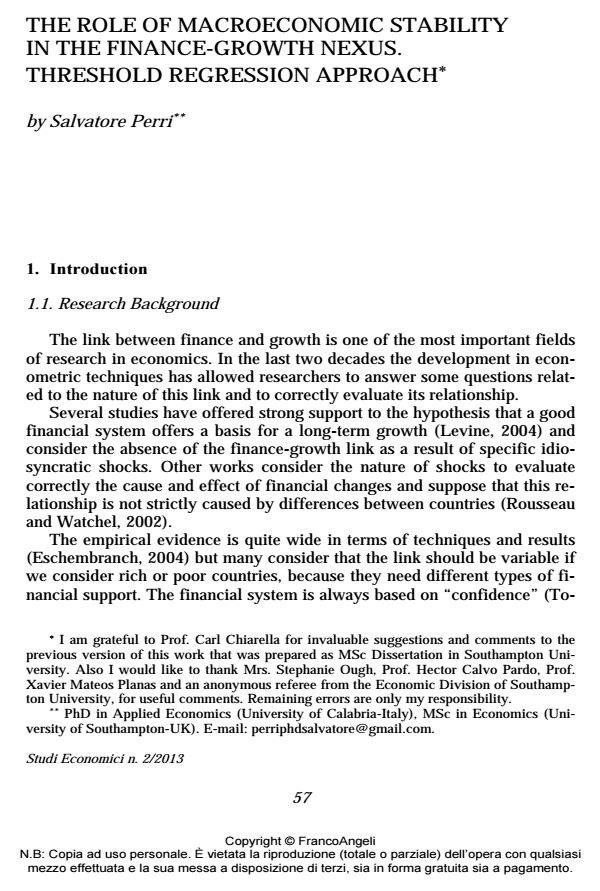The role of macroeconomic stability in the finance-growth nexus. Threshold regression approach
Journal title STUDI ECONOMICI
Author/s Salvatore Perri
Publishing Year 2014 Issue 2013/110
Language Italian Pages 25 P. 57-81 File size 205 KB
DOI 10.3280/STE2013-110004
DOI is like a bar code for intellectual property: to have more infomation
click here
Below, you can see the article first page
If you want to buy this article in PDF format, you can do it, following the instructions to buy download credits

FrancoAngeli is member of Publishers International Linking Association, Inc (PILA), a not-for-profit association which run the CrossRef service enabling links to and from online scholarly content.
In this paper we analyse the link between Finance and Growth and, in particular, if this link is variable in respect to changes in the "Macroeconomic Stability". This topic was studied by many authors without any definite conclusion being reached. This paper considers the theoretical and the empirical problem in two ways: first, the evolution of the empirical literature, and a new empirical perspective to analyze that link. The research presented here attempts to answer this question using threshold methodology. It confirms previous analysis in respect to non-linearity of the relationship between finance and growth in international comparisons. The use of two different threshold variables confirms the complexity of this link and also the different mechanisms of transmission that operate inside different groups of countries. The use of the bank’s liquidity reserve ratio as a "stability" indicator suggests that probably the link between wealth and stability is not always enjoyed.
Keywords: Financial Development, Economic Development, Macroeconomic Stability, Threshold Effects
Jel codes: G00, E44, E06, O16
- Linear Models and Time‐Series Analysis pp.825 (ISBN:9781119432036)
Salvatore Perri, The role of macroeconomic stability in the finance-growth nexus. Threshold regression approach in "STUDI ECONOMICI " 110/2013, pp 57-81, DOI: 10.3280/STE2013-110004